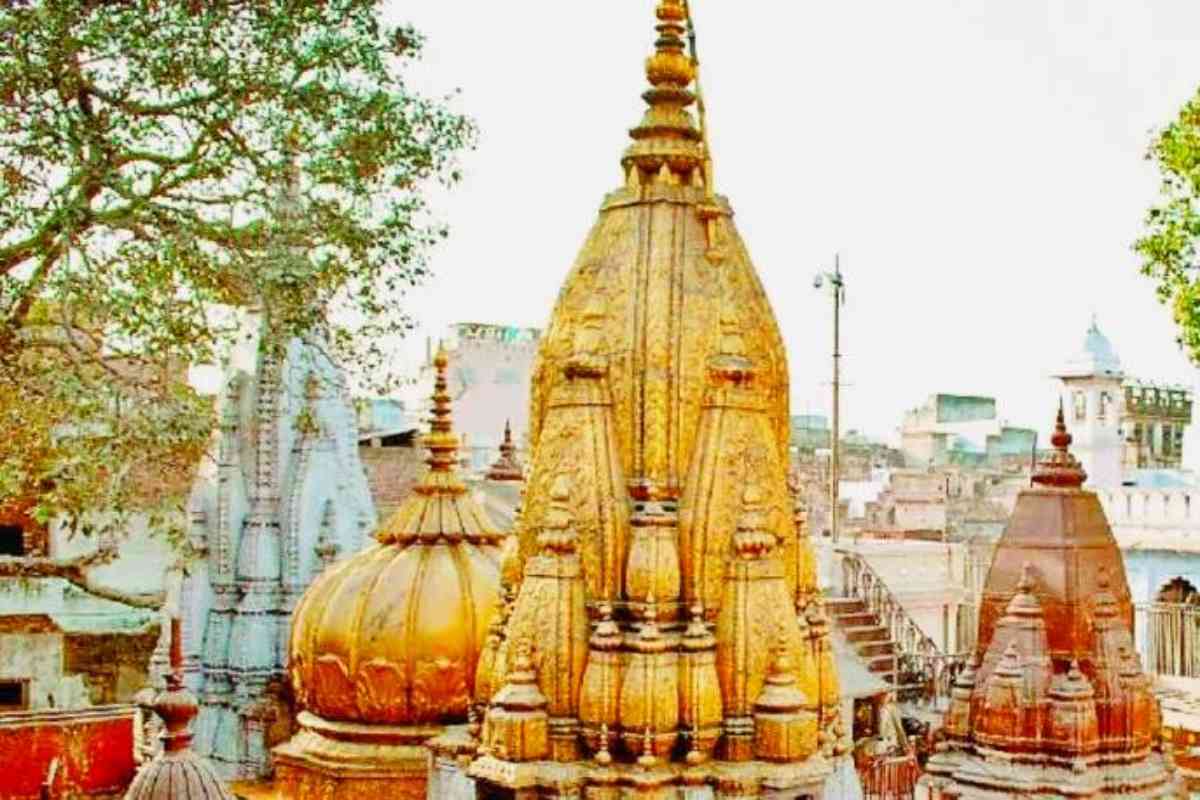Varanasi, one of the world’s oldest living cities, is not only a center of culture, learning, and spirituality but also a hub for devotion to Ma Shakti. Among its revered sites, Vishalakshi Shakti Peeth holds immense significance for devotees of the Divine Mother.
Vishalakshi Shakti Peeth is considered a sacred seat of Goddess Shakti, and is believed to be the place where a part of Goddess Sati’s body fell. This makes it one of the 51 Shakti Peethas, each representing the presence of the goddess in a unique form.
Dedicated to Ma Vishalakshi, this temple attracts pilgrims seeking blessings, protection, and spiritual guidance, making it a vital destination in the religious landscape of Varanasi.

Historical and Mythological Significance
The legend of Vishalakshi Shakti Peeth is closely linked to the ancient story of Sati and Lord Shiva:
- After Sati’s self-immolation, Lord Shiva carried her body in grief and fury, leading to the creation of the Shakti Peethas across the subcontinent.
- Vishalakshi Shakti Peeth is traditionally believed to be the site where the earrings (or another symbolic part) of Goddess Sati fell, giving this place its sacred status.
- The goddess Vishalakshi is worshiped for protection, prosperity, and spiritual empowerment, embodying both strength and compassion.
For centuries, devotees have flocked to this Shakti Peeth, believing that prayers offered here are divinely answered.
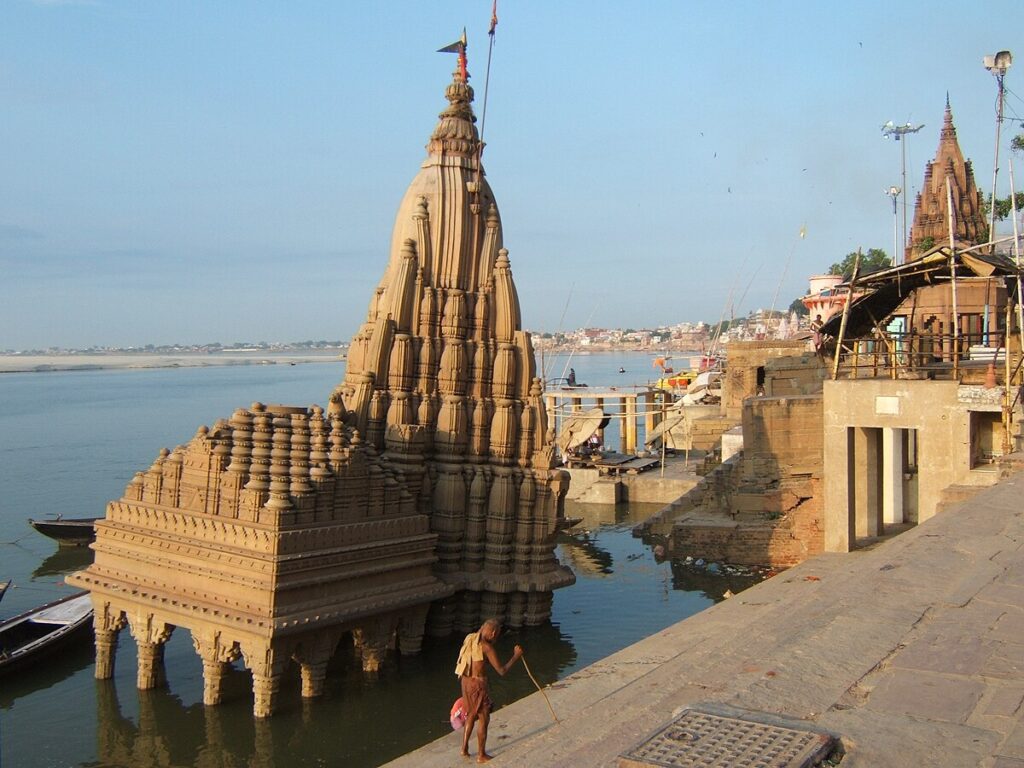
Temple Architecture and Layout
Vishalakshi Shakti Peeth in Varanasi showcases classic North Indian temple architecture, enhanced by centuries of devotion:
- Sanctum Sanctorum (Garbhagriha): Houses the idol of Ma Vishalakshi, adorned with sacred ornaments, garlands, and symbolic markings.
- Mandap: A hall for rituals, aartis, and congregational prayers.
- Temple Courtyard: Space for devotees to gather, meditate, and participate in ceremonies.
- Surrounding Area: The temple is located in the heart of Varanasi, near other famous temples and the Ghats of the Ganga, providing a serene environment amidst the bustling city.
The architecture, while traditional, emphasizes spiritual connection over grandeur, maintaining an atmosphere of devotion and sanctity.
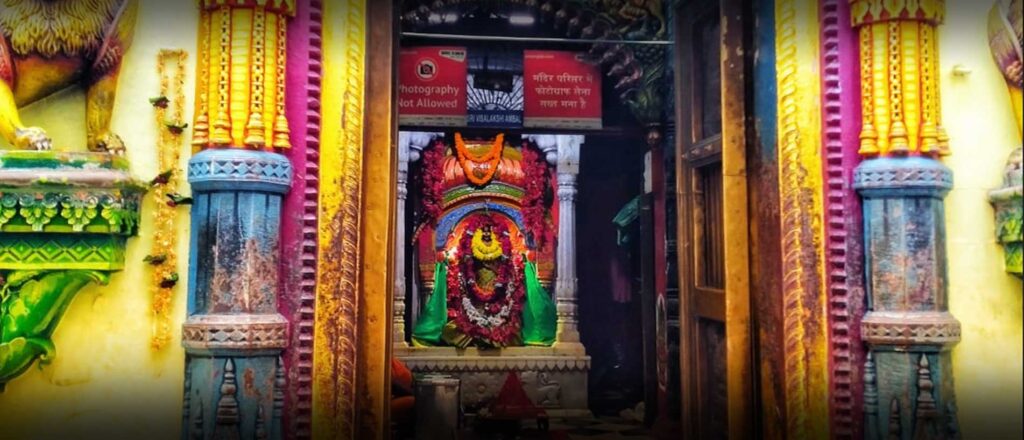
Devotional Practices and Rituals
The spiritual life of Vishalakshi Shakti Peeth revolves around daily rituals, worship, and special events:
- Daily Aarti: Morning and evening aartis are performed, accompanied by devotional chants and hymns.
- Offerings (Prasad): Devotees bring flowers, fruits, sweets, and incense as tokens of devotion.
- Navratri Celebrations: Navratri is the most important festival, celebrated with intense devotion, prayers, and processions.
- Special Practices: Devotees often light lamps, recite mantras, and tie threads symbolizing wishes and prayers.
The temple provides an immersive spiritual experience, encouraging visitors to meditate, offer devotion, and feel the presence of Ma Shakti.
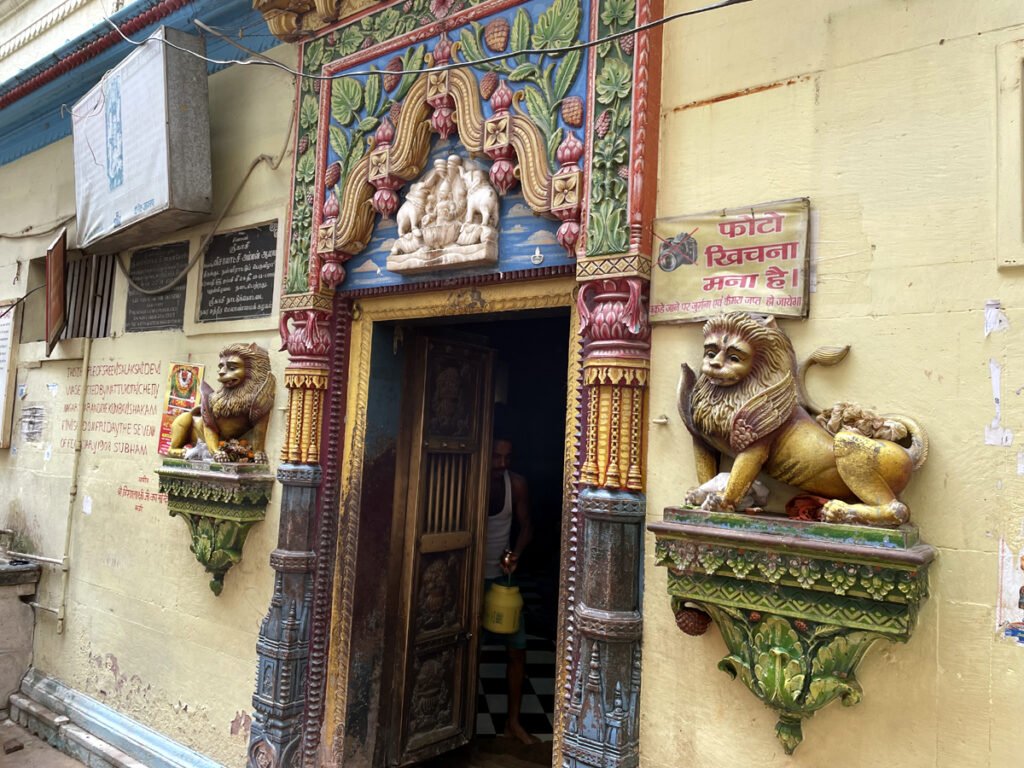
Significance of Visiting Vishalakshi Shakti Peeth
Visiting this temple holds immense religious and spiritual value:
- Divine Protection: The goddess is believed to protect devotees from negative influences.
- Wish Fulfillment: Pilgrims believe sincere prayers are answered, especially for health, prosperity, and family well-being.
- Spiritual Cleansing: The atmosphere and rituals allow visitors to cleanse their mind and soul.
- Cultural Experience: Visitors experience the deep-rooted traditions, rituals, and devotion of Varanasi, adding meaning to their pilgrimage.
Vishalakshi Shakti Peeth is both a religious center and a spiritual retreat, offering a connection to the divine feminine energy.
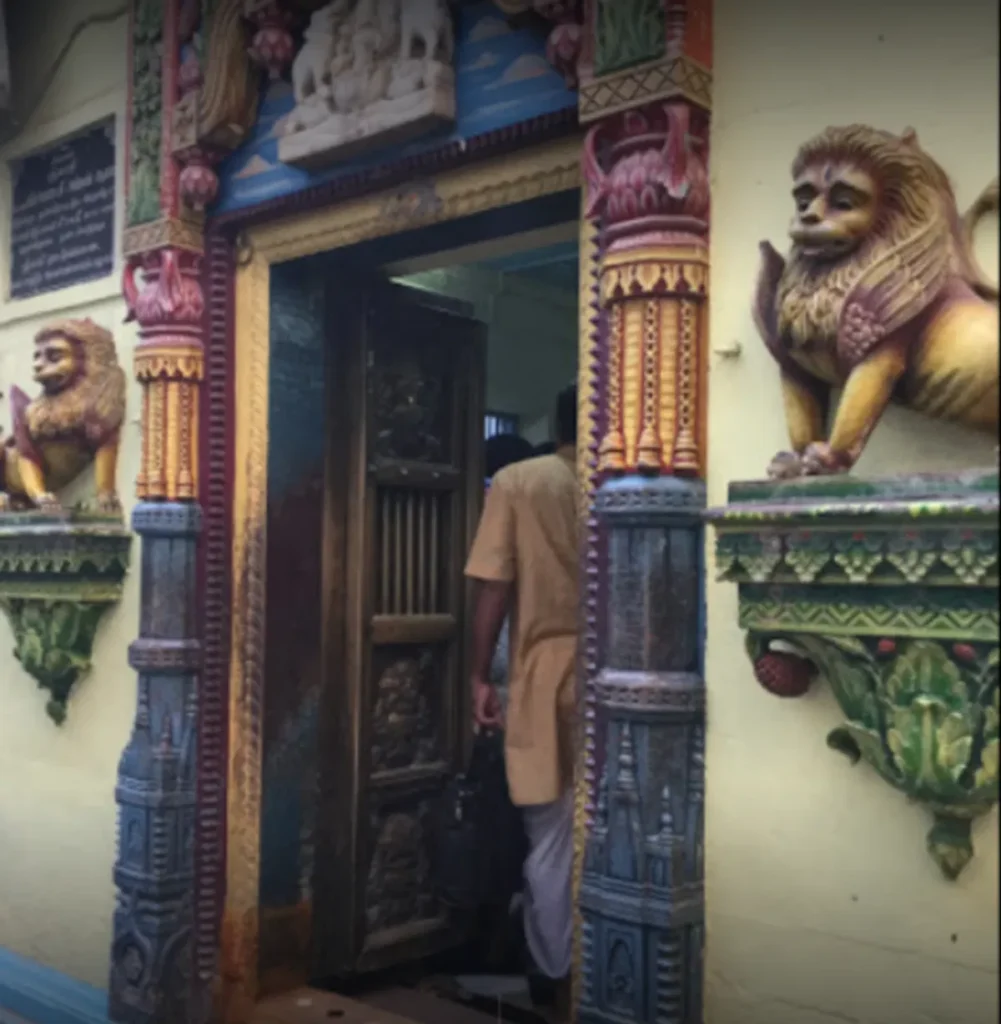
Nearby Attractions in Varanasi
While visiting Vishalakshi Shakti Peeth, pilgrims can explore other sacred and cultural landmarks:
- Kashi Vishwanath Temple: One of India’s most famous Shiva temples, attracting millions of devotees.
- Dashashwamedh Ghat: Iconic ghat for the evening Ganga Aarti, a mesmerizing spiritual experience.
- Manikarnika Ghat: One of the holiest cremation ghats, emphasizing Varanasi’s spiritual cycle of life and death.
- Sankat Mochan Hanuman Temple: Popular for strength and protection prayers.
- Local Markets: Offer religious items, souvenirs, and traditional Banarasi handicrafts.
Visiting these sites complements the spiritual journey, providing both devotion and cultural immersion.
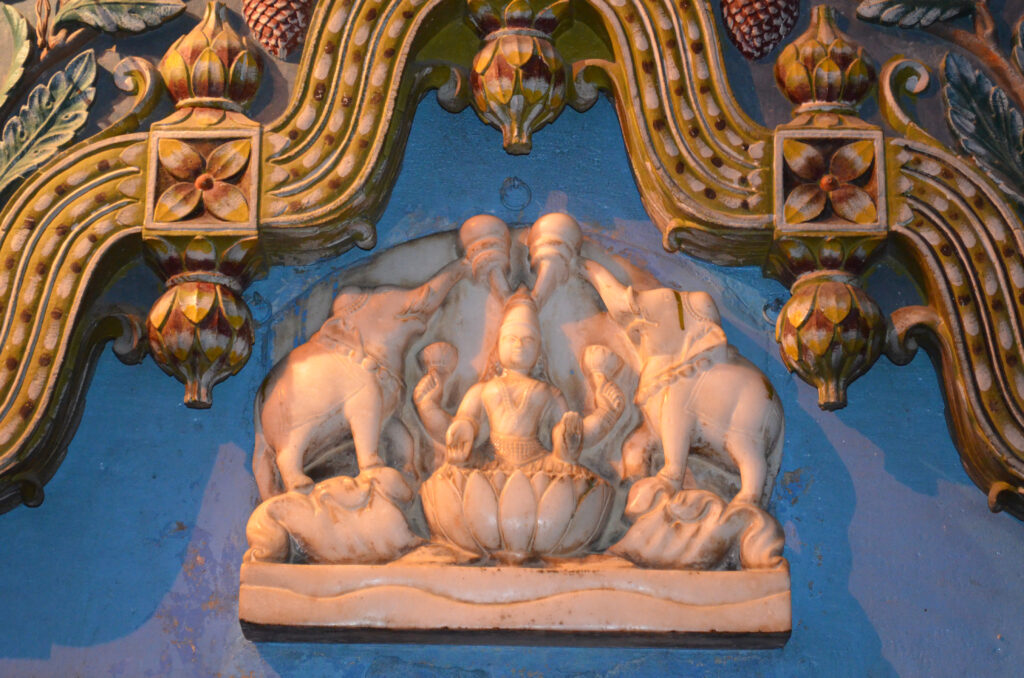
How to Reach Vishalakshi Shakti Peeth
By Road:
Varanasi is well-connected to major cities like Delhi, Lucknow, and Patna through highways. Local taxis, auto-rickshaws, and buses provide easy access to the temple.
By Train:
Varanasi Junction Railway Station connects the city to all parts of India, making it convenient for pilgrims.
By Air:
Varanasi International Airport (Babatpur) is the nearest airport, about 20 km from the city center. Taxis and local transport connect visitors to the temple.
Local Access:
The temple is walkable from nearby ghats and local areas, allowing visitors to experience the spiritual energy of Varanasi while navigating the city streets.
Best Time to Visit
To have a meaningful and comfortable pilgrimage experience at Vishalakshi Shakti Peeth, choosing the right time is important:
- Autumn (September to November): This is the most favorable period with pleasant weather and clear skies, ideal for temple visits and exploring Varanasi’s ghats.
- Spring (February to March): Comfortable temperatures and mild climate allow for a serene visit without the summer heat.
- Avoid Peak Summer: The months of May to July can be extremely hot, making long walks and temple visits exhausting.
- Monsoon (July to August): Although the city turns lush and green, heavy rainfall may disrupt travel plans.
For devotees wanting to experience the festive energy, visiting during Navratri ensures a spiritually vibrant atmosphere, with the temple adorned beautifully and special poojas being conducted.
FAQs for Vishalakshi Shakti Peeth
1. Why is Vishalakshi Shakti Peeth famous?
Vishalakshi Shakti Peeth is a revered Shakti Peetha, dedicated to Goddess Vishalakshi, believed to grant blessings and spiritual fulfillment.
2. Where is Vishalakshi Shakti Peeth located?
It is located in Varanasi, Uttar Pradesh, one of the holiest cities along the banks of the Ganga.
3. What is worshipped at Vishalakshi Shakti Peeth?
The temple worships Goddess Vishalakshi (Shakti), symbolizing divine feminine energy and prosperity.
4. What are the temple timings?
The temple generally opens from 5:00 AM to 9:00 PM, with morning and evening aarti performed daily.
5. Is photography allowed inside Vishalakshi Shakti Peeth?
Photography is restricted inside the sanctum, but allowed in surrounding areas.
6. What is the significance of Vishalakshi Shakti Peeth as a Shakti Peetha?
It is believed that the eye of Goddess Sati fell here, making it a sacred site of divine energy and devotion.
7. How can I reach Vishalakshi Shakti Peeth?
The temple is accessible via road and local transport from Varanasi city. The nearest railway station and airport are Varanasi Junction and Lal Bahadur Shastri Airport.
8. Are there any special rituals at Vishalakshi Shakti Peeth?
Yes, daily aarti, special pujas, and offerings are performed, especially during Navratri and other festivals.
9. Is there accommodation near Vishalakshi Shakti Peeth?
Yes, Varanasi offers hotels, guesthouses, and dharamshalas suitable for pilgrims and tourists.
10. What is the best time to visit Vishalakshi Shakti Peeth?
October to March is ideal to avoid extreme summer and monsoon rains, making pilgrimage comfortable.

